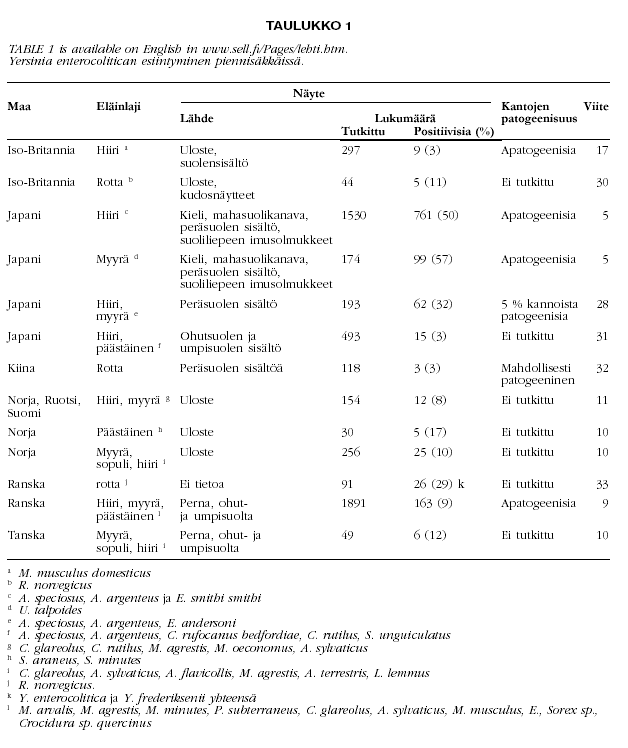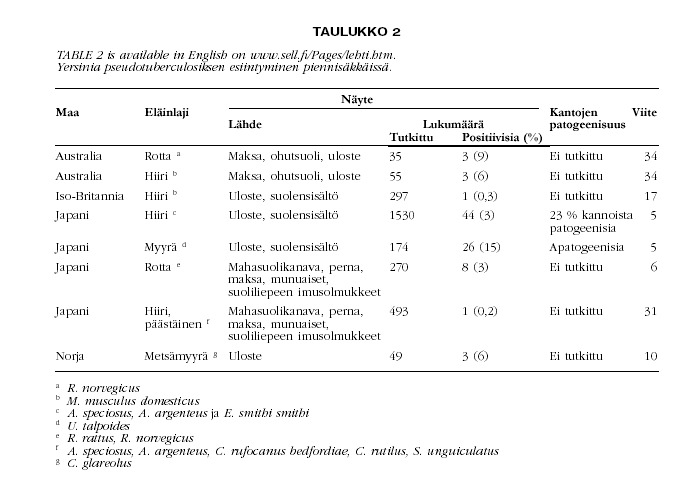
Yersinia pseudotuberculosis and Yersinia enterocolitica are enterobacteria colonising animals and potential foodborne pathogens for humans. The number of epidemics caused by Y. pseudotuberculosis has increased in Finland during the last few years. The source of these epidemics has mainly been vegetables contaminated with Yersinia. The contamination route is still unclear. Identifying potential animal reservoirs for Y. pseudotuberculosis is needed to reduce the risk of epidemics. Pigs are considered the main reservoir for Y. enterocolitica, but wild rodents may also carry the pathogen. Wild rodents are regarded as one of the main reservoirs for Y. pseudotuberculosis. The prevalence of Y. enterocolitica varies from 3 to 11 % and the prevalence of Y. pseudotuberculosis from 0.2 to 3 %. Y. enterocolitica isolated are mainly apathogenic. Small rodents may play a role as reservoirs for Y. pseudotuberculosis, but not for human pathogenic Y. enterocolitica. However, the pathogenicity of Yersinia strains has been studied insuffi ciently in most reports, making the comparison of the results difficult.

